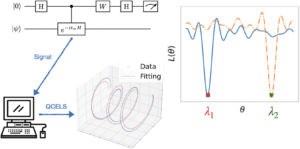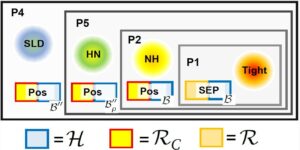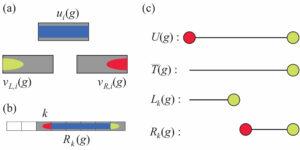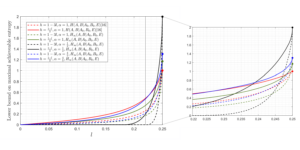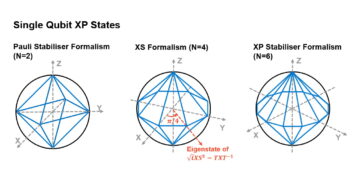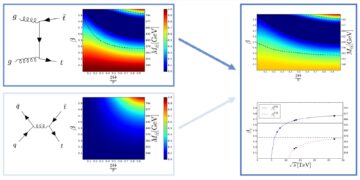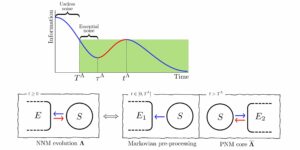Columbia University
Find this paper interesting or want to discuss? Scite or leave a comment on SciRate.
Abstract
We show that $Omega(rd/epsilon)$ copies of an unknown rank-$r$, dimension-$d$ quantum mixed state are necessary in order to learn a classical description with $1 – epsilon$ fidelity. This improves upon the tomography lower bounds obtained by Haah, et al. and Wright (when closeness is measured with respect to the fidelity function).
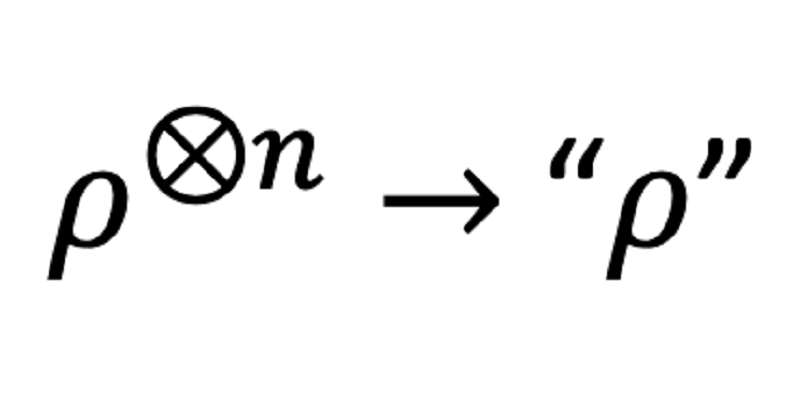
Featured image: Quantum state tomography.
Popular summary
► BibTeX data
► References
[1] Dagmar Bruß and Chiara Macchiavello. Optimal state estimation for $d$-dimensional quantum systems. Physics Letters A, 253 (5-6): 249–251, 1999. https://doi.org/10.1016/S0375-9601(99)00099-7.
https://doi.org/10.1016/S0375-9601(99)00099-7
[2] Jeongwan Haah, Aram W Harrow, Zhengfeng Ji, Xiaodi Wu, and Nengkun Yu. Sample-optimal tomography of quantum states. IEEE Transactions on Information Theory, 63 (9): 5628–5641, 2017. https://doi.org/10.1145/2897518.2897585.
https://doi.org/10.1145/2897518.2897585
[3] Michael Keyl and Reinhard F Werner. Optimal cloning of pure states, testing single clones. Journal of Mathematical Physics, 40 (7): 3283–3299, 1999. https://doi.org/10.1063/1.532887.
https://doi.org/10.1063/1.532887
[4] Ryan O'Donnell and John Wright. Efficient quantum tomography. In Proceedings of the forty-eighth annual ACM symposium on Theory of Computing, pages 899–912, 2016. https://doi.org/10.1145/2897518.2897544.
https://doi.org/10.1145/2897518.2897544
[5] Reinhard F Werner. Optimal cloning of pure states. Physical Review A, 58 (3): 1827, 1998. https://doi.org/10.1103/PhysRevA.58.1827.
https://doi.org/10.1103/PhysRevA.58.1827
[6] Andreas Winter. Coding theorem and strong converse for quantum channels. IEEE Transactions on Information Theory, 45 (7): 2481–2485, 1999. https://doi.org/10.1109/18.796385.
https://doi.org/10.1109/18.796385
[7] John Wright. How to learn a quantum state. PhD thesis, Carnegie Mellon University, 2016.
Cited by
[1] Nic Ezzell, Elliott M. Ball, Aliza U. Siddiqui, Mark M. Wilde, Andrew T. Sornborger, Patrick J. Coles, and Zoë Holmes, "Quantum Mixed State Compiling", arXiv:2209.00528.
[2] Ming-Chien Hsu, En-Jui Kuo, Wei-Hsuan Yu, Jian-Feng Cai, and Min-Hsiu Hsieh, "Quantum state tomography via non-convex Riemannian gradient descent", arXiv:2210.04717.
[3] Joran van Apeldoorn, Arjan Cornelissen, András Gilyén, and Giacomo Nannicini, "Quantum tomography using state-preparation unitaries", arXiv:2207.08800.
[4] Srinivasan Arunachalam, Sergey Bravyi, Arkopal Dutt, and Theodore J. Yoder, "Optimal algorithms for learning quantum phase states", arXiv:2208.07851.
The above citations are from SAO/NASA ADS (last updated successfully 2023-01-03 14:40:21). The list may be incomplete as not all publishers provide suitable and complete citation data.
Could not fetch Crossref cited-by data during last attempt 2023-01-03 14:40:19: Could not fetch cited-by data for 10.22331/q-2023-01-03-890 from Crossref. This is normal if the DOI was registered recently.
This Paper is published in Quantum under the Creative Commons Attribution 4.0 International (CC BY 4.0) license. Copyright remains with the original copyright holders such as the authors or their institutions.
- SEO Powered Content & PR Distribution. Get Amplified Today.
- Platoblockchain. Web3 Metaverse Intelligence. Knowledge Amplified. Access Here.
- Source: https://quantum-journal.org/papers/q-2023-01-03-890/
- 1
- 10
- 1998
- 1999
- 2016
- 2017
- 7
- 9
- a
- above
- ABSTRACT
- access
- ACM
- affiliations
- algorithms
- All
- and
- annual
- author
- authors
- Break
- Carnegie Mellon
- Carnegie mellon university
- channels
- Coding
- comment
- Commons
- complete
- complexity
- computing
- copyright
- could
- data
- Den
- description
- discuss
- during
- efficient
- Elliott
- Ether (ETH)
- fidelity
- from
- function
- harvard
- holders
- How
- How To
- HTTPS
- IEEE
- image
- improved
- improves
- in
- information
- institutions
- interesting
- International
- IT
- Jan
- JavaScript
- John
- journal
- kuo
- Last
- LEARN
- learning
- Leave
- License
- List
- mark
- mathematical
- max-width
- Mellon
- Michael
- mixed
- Month
- necessary
- needed
- normal
- number
- obtained
- open
- optimal
- order
- original
- Paper
- phase
- physical
- Physics
- plato
- Plato Data Intelligence
- PlatoData
- presents
- Proceedings
- provide
- published
- publisher
- publishers
- Quantum
- quantum systems
- recently
- references
- registered
- remains
- review
- Ryan
- show
- single
- State
- States
- strong
- Successfully
- such
- suitable
- Symposium
- Systems
- Testing
- The
- their
- Title
- to
- Transactions
- under
- university
- updated
- URL
- via
- volume
- W
- Winter
- Wright
- wu
- year
- zephyrnet

